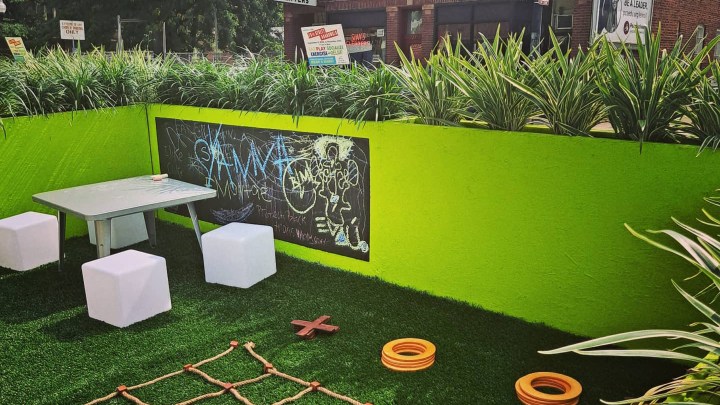
The pandemic poses challenges and new opportunities for city planning
The pandemic poses challenges and new opportunities for city planning

Large neon green sidewalk pods stretch a couple of blocks in the Park Manor neighborhood on Chicago’s South Side.
This fall, as the city adjusted to the realities of COVID-19, people could sit outside, eat ribs, vegan dishes or caramel cake from nearby businesses. They could play oversized checkers and tic-tac-toe.
The pandemic has forced city residents to be less dependent on downtown for activities, explained Maurice Cox, Chicago’s commissioner for the Department of Planning and Development.
“I feel really strongly the scale of urbanism, the scale neighborhood is going to be one of the major takeaways post-COVID,” he said.
In many communities, life sheltering in place isn’t changing any time soon as restrictions on gatherings grow more strict. With COVID-19 changing the way people live and get around, city planners in Chicago see the pandemic as an opportunity to rethink urban living.
Cox says imagine if every neighborhood had its own downtown.
“Where you could go to work, where you could get your weekly needs, where you could recreate all within the geography of your neighborhood,” he said. “I think neighborhoods have the potential to be the driver of the recovery and the driver of urbanism that people want.”
What’s happening in the Park Manor neighborhood is exciting to Dawveed Scully. He’s an urban designer with Skidmore, Owings & Merrill, an architectural firm.
“Urbanism in cities is about collective energy and collective activity,” he said.
But that activity will need to be supported with meaningful investment. And historically that hasn’t happened in Chicago’s Black and Brown neighborhoods. Lynda Lopez, a manager for a local transportation advocacy group, said that concerns her.
Standing in an empty lot in a Chicago neighborhood, Lopez points out that there are homeless people camped out nearby. She said this area should be turned into affordable housing.
“Every time I go into Little Village, I cross viaducts and they’re pretty much tent cities,” she said.
This should be the focus of urbanism, she said, making sure everyone is taken care of.
There’s a lot happening in the world. Through it all, Marketplace is here for you.
You rely on Marketplace to break down the world’s events and tell you how it affects you in a fact-based, approachable way. We rely on your financial support to keep making that possible.
Your donation today powers the independent journalism that you rely on. For just $5/month, you can help sustain Marketplace so we can keep reporting on the things that matter to you.












